Broken windows theory: practical meaning
Have you ever had to overcome a strong desire to run across the road at a red light when there are no cars on it? Do you know the feeling of annoyance that you are standing in front of an empty roadway just because other pedestrians are also patiently and legally waiting for a green traffic light?
And then someone in front takes off and runs, and you run after him, relatively easily overcoming the feeling of awkwardness from violating the generally accepted rule. And have you ever, passing by an abandoned pile of garbage or an “accidentally” formed dump, relish spit out chewing gum at them, although the absence of a garbage can here and the prohibition on littering are very obvious? Such elements of behavior are a reflection of one remarkable criminological theory - the theory broken windows.
This theory is based on the assertion that the constant maintenance general order in a specific place and strict control over its appearance capable of stopping the development of vandalism and the worsening of the crime situation in general. According to this theory, any more or less noticeable signs of disorder in even a very cultured society and locality immediately cause a certain reaction of others: encourage them to act in the same vein.
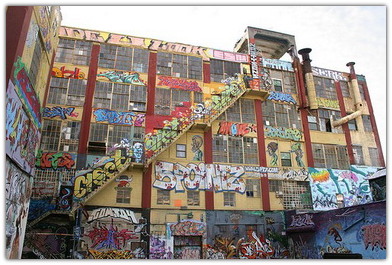
The basis of the theory was first described in detail in the article "Broken Windows", written by social scientists James Wilson and George Kelling and published in 1982 in the issue of one of the oldest American magazines, The Atlantic Monthly (now simply The Atlantic). The article received a wide response in society and was subjected to increased attention of representatives of the field of science. But long before the publication of the article, the social phenomenon, which was later called the “broken windows theory”, haunted scientists. Back in 1969, Stanford University psychologist Philip Zimbardo conducted an interesting experiment as part of his study of this phenomenon.
For the purposes of the experiment, he placed a rather shabby car without license plates and with an open hood in one of the parking lots of the Bronx neighborhood - the most criminal area in New York. He left the second car in exactly the same condition in Palo Alto, one of the most elite and expensive university cities in California. During the observation, it was noted that the car in the Bronx was vandalized literally in a matter of minutes after the start of the experiment. Moreover, the first violators were a whole family - they were a father, mother and their young son, who were pulled out of the car and took the battery with them. Over the next twenty-four hours, the contents of the car were already completely stolen, the windows were broken, and teenagers were playing in the car itself.
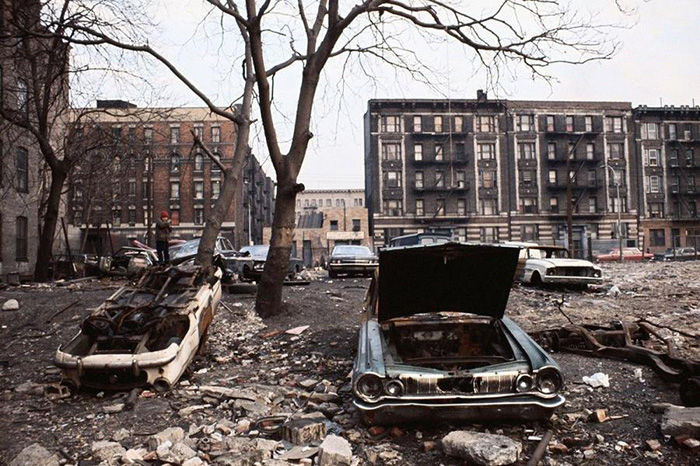
The car, left in Palo Alto, remained untouched for more than a week! But after the experimenter partially smashed the car with a hammer with his own hand, it was subjected to further destructive action on the part of the inhabitants of the city. Thus, it was noticed that in less prosperous areas where the practice of theft, vandalism and crime prevails, crimes and offenses are committed faster, since the local society does not see anything reprehensible in this and is frankly indifferent to this.
But also in prosperous areas, where society is more cultural and where crime is less common. , albeit later, but exactly the same thing happens. The slightest sign of non-observance of order by some people sets off a chain reaction among others. By the way, the psychologist noted that in both cases the so-called vandals were very well dressed and gave the impression of quite decent people!
But why is this happening? In fact, psychological aspect problems are not at all complicated. The fact is that being in that environment where cleanliness and order reigns, a person subconsciously reads a signal that this location is guarded, under control and that criminal or any other behavior that is different from the generally accepted one will not be approved here. In the same way, the opposite situation, that is, being on a street whose walls, for example, are painted with graffiti, or the windows of houses are partially broken out, will entail a subconscious belief that the street is not controlled by anyone and that order is not monitored on it, and therefore, it is possible do whatever you want here. It is not the presence of a broken window on the street that is important, but the information that its appearance carries to the subconscious of people on this street. The broken window is partly a sign of the conditional "abandonment" of the street. And vice versa, a more or less decent condition of the street stops others from any vandal or criminal acts. In turn, if we delve into the theory, we can assume that just one broken window cannot lead to looting, the complete destruction of the house itself, the transformation of the microdistrict where the house is located into an extremely unpleasant and dangerous place.
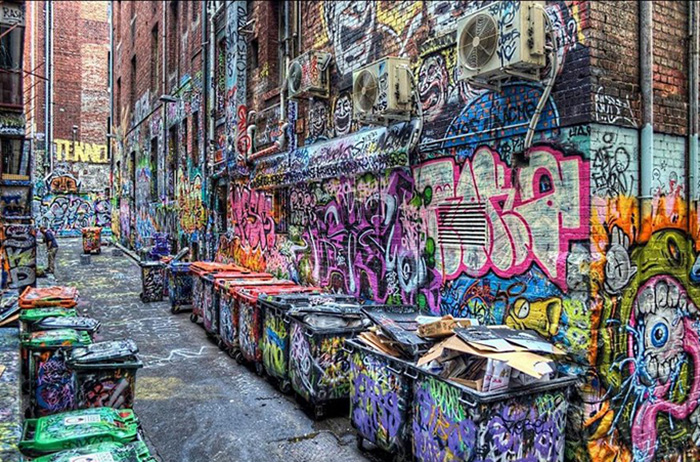
In support of the broken windows theory, many interesting and curious experiments were carried out under the guidance of researchers from various universities and institutes in the United States, and then the Netherlands.
In one experiment, conducted in the Dutch city of Groningen, 77 bicycles that were parked outside a store near a wide white wall (marked with a prominent sign prohibiting drawing on it) were hung up by experimenters with one advertising booklet with unremarkable information. The goal of the first stage of the experiment was to find out what percentage of cyclists would violate the cleanliness of the street and the accepted norms by throwing the booklet on the ground or hanging it on someone else's bike. As a result, 67 percent of total number bike owners took the booklet with them to throw away later, and the number of offenders was only 33 percent. To carry out the second stage of the experiment, the following was done: the very wall at which cyclists parked and which was marked with a sign prohibiting it from being dirty in any way was brightly painted with graffiti. The second stage was held in absolutely identical conditions as the first, even at the same time of day and in the same weather. But this time the percentage of violators was 69 percent! Thus, the fact of observing the result of breaking one social rule, do not draw on the wall, prompted the participants in the experiment to break another rule - do not litter on the street.

Another similar experiment was carried out in the same city. Having blocked the main entrance to the parking lot, but at the same time leaving a considerable gap in the partition, the experimenters hung a notice on it indicating the way around. As a result, in the “order is observed” situation, only 27% of car owners crawled into the hole, violating the rule, and in the “order is violated” situation, as many as 82%.
A large number of similar experiments conducted in the process of investigating the broken windows theory made it possible to prove its correctness. But what is the value of this theory? The results of the study of this phenomenon and the principles identified in the process of its study also have an applied function.
Local governments in many cities, especially American ones, based on this theory and realizing that the process of preventing riots is much easier than the process of eliminating them, began to pay more attention to maintaining the well-being of the streets and the general positive atmosphere of the area, and also began to monitor control more strictly. petty crime. Also in the 1990s, a whole program based on the broken windows theory was launched in New York, especially in relation to the subway. This is because it was the then head of the transport police, William Bratton, who considered and did not hesitate to call that same scientist, George Kelling, his "mentor of thought." Bratton ordered, first of all, to tighten the regulation of minor offenses: drinking alcohol in transport, defecation in subway crossings, prostitution at bus stops, painting graffiti on train cars, etc. His policy was strongly condemned by New Yorkers. "Why is petty crime given such close attention as if there were no other problems in New York?" - the media and ordinary Americans were indignant. But Bratton's belief that it was the indulgence in the existence of petty crimes that sparked the green light for the commission of larger crimes bore good results - numerous statistical calculations revealed a significant decline in petty and major crimes in New York, and the decline trend continued for another ten years.

The theory served as the basis for many minor reforms in the field of public order and the organization of police work, and also gave a new round in the development of some sections of forensic science.
The principles of theory are widely applied in practice in some American schools. This is expressed in an exceptionally strict attitude towards non-compliance with the rules generally accepted in the school. There are rules, roughly speaking, for everything, and their violation will entail inevitable consequences, up to and including expulsion from school. For example, it is forbidden to violate specially established rules of communication, class etiquette, the so-called dress code, strictly defined behavior. The administration of such schools believes, according to the theory of broken windows, that ignoring the violation of the rules by one student can lead to violations of them by other students, therefore, compliance with school rules is considered very important.

The theory of open windows was adopted by realtors and other employees of the real estate business. The absence of graffiti on the walls and debris on the roads, the cleanliness and order of a particular microdistrict makes it easy to determine the degree of its well-being and, accordingly, greatly simplifies the process of setting prices.
Over the past decade, the broken windows theory has been criticized more than once and accused of inconsistency and unreliability. Many forensic scientists, sociologists, psychologists and members of the media have spoken out against it, arguing that the theory is not perfect and should not be trusted unconditionally. There are some solid arguments in the rebuttals cited by opponents of the theory. But the partial veracity of the theory cannot be ruled out: there are cases when the presence of only a few broken windows in a house located in a quite decent urban microdistrict led to the breaking of all the windows in turn, and after a while led to total destruction of the house itself.
Subscribe to the news feed:
I will tell you a story about the darkest times in New York - a city where almost every one of us dreams of being in today. At the end of the eighties of the twentieth century, it was overwhelmed by a wave of crime - up to one and a half thousand serious violent crimes, at least five murders, were committed in the Big Apple per day. There were areas in the city that respectable citizens tried never to enter. At night, being on the street was life-threatening, and people were afraid to ride the subway at any time of the day. The city was very dirty, a lot of weapons and drugs were walking around it; the subway, stations and building walls were covered in graffiti. In the subway, many rode as a hare, simply jumping over the turnstile.
Today New York is a sparkling beautiful city with a low crime rate. Rampant murders and robberies, having reached their peak, began to decline sharply. What's the secret?
American sociologists and criminologists James Wilson and George Kelling invented the broken windows theory in 1982. It consisted in the fact that if the building has one broken window, then in a very short time the hooligans will break the rest - if no one wanted to reglaze the window, then no one cares about this building. If the broken glass is replaced, then everything will be in order. This metaphor refers to the relationship between impunity and the rise in crime.
Later, sociologists from the Netherlands conducted a series of experiments to confirm or refute this theory. We will not delve into each of the experiments. Their general idea was to compare the behavior of subjects in different conditions. Each experiment consisted of two stages. In both cases, people were gradually pushed into committing violations - throwing a piece of paper past the urn or stealing an envelope with money. But in one case, this happened while maintaining cleanliness and order, and in the second, there was some violation of social rules - for example, the wall was painted with graffiti. It was not just an illegal drawing - it symbolized a negative example as a catalyst for petty hooliganism. The results amazed the experimenters - in the first case, the subjects committed far fewer violations than in the second. This means that the situation and the example of other people greatly affect even respectable citizens - let alone those who have serious problems with the law. Criminalists came to the conclusion that the dominance of crime is directly related to the negative environment and the connivance of the authorities regarding minor violations of the law.
 But that was later, and now we will return to New York, where the authorities still had to come to these conclusions empirically. It all started with the subway. In the early eighties, a certain David Gann came to the post of director of the subway, who decided to put the running transport network on its feet at all costs. And the first thing he started to fight graffiti. Many twisted their fingers to their heads, saying that the subway has problems more serious than painted cars. But Gann stubbornly stood his ground, considering graffiti a symbol of the victory of chaos over the system. The struggle lasted for many years, street boys stubbornly painted the cars with markers, and subway workers painted over the inscriptions. And yet order prevailed.
But that was later, and now we will return to New York, where the authorities still had to come to these conclusions empirically. It all started with the subway. In the early eighties, a certain David Gann came to the post of director of the subway, who decided to put the running transport network on its feet at all costs. And the first thing he started to fight graffiti. Many twisted their fingers to their heads, saying that the subway has problems more serious than painted cars. But Gann stubbornly stood his ground, considering graffiti a symbol of the victory of chaos over the system. The struggle lasted for many years, street boys stubbornly painted the cars with markers, and subway workers painted over the inscriptions. And yet order prevailed.
Another important stage was the fight against the “hares”, which were taken up by William Bratton, who came to the post of head of the traffic police in the early nineties. He stepped up security, plainclothes cops grabbed anyone who tried to jump over the turnstile. The caught violators were sent to the city police station. The connection of love for free travel with other offenses turned out to be interesting - many “hares” had drugs and weapons with them, many were on the wanted list. Then for the police it was a gold mine - after each capture there were many criminals. After some time, the most notorious "hares" became smarter and began to pay for the fare, thereby ceasing to incite the rest to jump through the turnstiles.
Later, Bratton went to work in the city police, transferring his principles there. On the streets of the city, a large-scale struggle has unfolded against petty hooliganism, drinking alcohol on the streets, graffiti and garbage. The policemen have expanded their powers, it became possible to search suspicious people on the street for weapons and drugs (previously, this required good reasons and a warrant). Thus, having got rid of petty hooliganism and minor offenses, the police were able to bring the city out of the criminal crisis.
Broken windows theory in life and business
This theory is in the field of forensic science, but is it possible to apply it in other areas of people's lives - business, relationships, everyday life? Of course it's possible. Transferring it to other planes, we can see that it works everywhere. Where it's dirty - there they litter even more, where one person does his job somehow - the rest will "hack" there. In general, more negativity sticks to any negativity, and problems begin to grow like a snowball. How to identify broken windows in your own home?
 If there are any difficulties that cannot be solved for a long time, you need to look at the big picture and find minor flaws - they can be the impetus for the loss of discipline in the work team or at home. If someone in the work team allows himself to be late for work, drink at the workplace or play with married ladies, everyone immediately begins to delve into their own sins. One will "cut into shooting games", the second will sleep at work, the third will steal folders or screws. It is enough for one to find a gap in the system - and everyone will take advantage of this.
If there are any difficulties that cannot be solved for a long time, you need to look at the big picture and find minor flaws - they can be the impetus for the loss of discipline in the work team or at home. If someone in the work team allows himself to be late for work, drink at the workplace or play with married ladies, everyone immediately begins to delve into their own sins. One will "cut into shooting games", the second will sleep at work, the third will steal folders or screws. It is enough for one to find a gap in the system - and everyone will take advantage of this.
The reason for the laxity of any team (even a family one, even a worker) can be any household trifle - from old computers in offices to a leaking roof in the kitchen or a dirty toilet in the office.
If we talk about personal discipline, then here you can see the theory of broken windows in action. For example, if you don't make a habit of checking your work inbox every morning, deleting spam and replying to important emails, you can miss out on a lot of promising offers, important comments from customers, and get lost in a pile of electronic garbage. As a result, there is a general disorganization at work, the collapse of important projects, a reprimand from superiors, a loss of trust and career opportunities. And despite the fact that a person can be quite a competent specialist. He can clutch his head and desperately think why he has such a mess in his affairs - and it all started with a mailbox. Of course, this is just an example - the scenario can be anything, because we are all different.
Everything starts small. Remember, your parents said in your youth: “Don't smoke! First you want a cigarette, then beer, then marijuana, and it will all end with a needle and taking the TV out of the house. We laughed at their words, but now it is clear that many drunken alcoholics and drug addicts, thieves and murderers always started with small tasks. Killers trained on cats, and thieves "stole" chewing gum in supermarkets.
But let's not exaggerate, but let's return to the average person who is simply confused in his affairs and cannot understand where to start. You should start with the little things. If there is a problem with discipline and diligence, it is enough to start learning at least to wash your plate after eating. The broken windows theory works in both directions - just as an avalanche of problems accumulates through negative little things, so through positive small achievements these problems begin to be solved.
Look around and see what little things, whose bad example (including your own) confuse you - you will definitely see them.
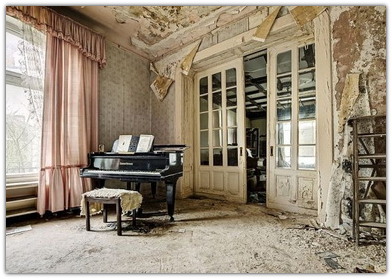 Less always grows into more. The example of one person provokes the crowd to do the same. Imagine a passer-by walking down the street with nowhere to throw an ice cream wrapper. It is unlikely that he will just throw it at his feet, but when he sees a pile of garbage on the pavement, he will immediately throw the piece of paper right there with a clear conscience. Thinking works: "Others do, and I can." But once there was only one piece of paper. Then a second one joined her, then another one - and so this pile appeared. As they say in American films, there was patient zero that started it all. Someone nevertheless threw this first piece of paper under his feet, and the rest simply “befriended”. This is our essence - it is easier for us to act in a crowd than one by one.
Less always grows into more. The example of one person provokes the crowd to do the same. Imagine a passer-by walking down the street with nowhere to throw an ice cream wrapper. It is unlikely that he will just throw it at his feet, but when he sees a pile of garbage on the pavement, he will immediately throw the piece of paper right there with a clear conscience. Thinking works: "Others do, and I can." But once there was only one piece of paper. Then a second one joined her, then another one - and so this pile appeared. As they say in American films, there was patient zero that started it all. Someone nevertheless threw this first piece of paper under his feet, and the rest simply “befriended”. This is our essence - it is easier for us to act in a crowd than one by one.
So where are all these conversations leading us to? Let's summarize what is expressed and how the theory of broken windows works:
- Dirt and untidiness of the place of events provokes a person to break the rules;
- The bad example of other people removes moral prohibitions;
- Minor violations provoke more serious crimes;
- The theory works in both directions, which means that by eradicating dirt, bad example and minor violations, it is possible to achieve discipline, order, a greater level of responsibility and self-control of others;
- All of this applies to yourself.
This knowledge helps to reconsider the attitude to trifles in any field of human activity. By starting small improvements in everyday life and at work, after a while you can come to a radical change in your whole life. And who knows, maybe once a habit of running in the morning with a dog will lead its owner to the development of discipline, diligence and successful business growth. Ignorant people will not find a connection between the one and the other, but we now know what the secret is.
A fairly popular concept, which is constantly found in literary works, in feature films, in everyday speech, the broken windows theory. Usually she is remembered with regret, shaking her head when they see something unsightly, but at the same time painfully familiar. What is it about, and how to use this expression correctly? Can this principle be applied to Everyday life? Worth sorting out.
Briefly about the essence of the theory
In 1982, American sociologists Wilson and Kelling formulated the theory that one broken window in a building causes all windows to be broken soon. Essentially, it means high level tolerance for minor offenses, which becomes fertile ground for more serious crimes.
Indeed, what is the point of maintaining order where chaos already reigns? It is on this principle that the theory of broken windows is based. Garbage is more often thrown where it is already dirty, and there it is close to other illegal actions. Therefore, if you remove the garbage, then people are unlikely to go to empty cigarette butts and throw papers where it is clean.
First practical application
Theory without practice can only be of research interest, so in 1994 the newly elected mayor of New York, Rudolph Giuliani, with the full support of the new police chief, began to put this principle into practice. Everyone can see with their own eyes the vastness of the plan, because enthusiasts have taken up a real hotbed of crime. The New York subway was considered an extremely unfavorable and dangerous place, this can be seen in American feature films made before 1994. Graffiti, garbage, youth gangs, fights and even robberies. Against this background, ticketless travel seems like an innocent blunder, but practical sense The theory of broken windows lies precisely in the fact that even one broken window cannot be considered an insignificant fact.
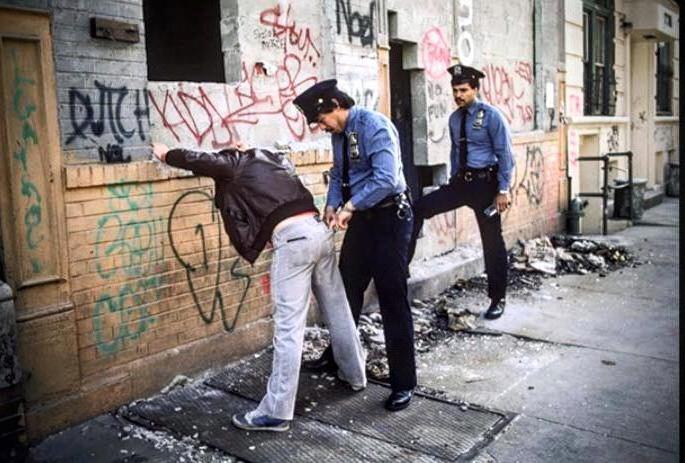
That is why the police took up petty offenses, over and over again catching stowaways and petty troublemakers. They were detained by tens and hundreds, taken to the police station, protocols were drawn up, fingerprinted and searched. Facts of involvement in other, more serious crimes surfaced. It soon became clear that in the metro it is better to behave in accordance with the law. Weapons remained at home or in other secluded places, the amount of garbage decreased significantly. The subway became safe, and it was a real triumph of theory, confirmed by practice.
The test of time
After a brilliant experience with the New York subway, the theory of broken windows became of interest to sociologists from other countries. Experiments carried out in the Netherlands are widely known. Sociologists deliberately provoked people to throw garbage in places not intended for this. The rubbish was advertising leaflets, which were fixed on parked bicycles. The ideal order around prevented people from simply throwing a piece of paper on the sidewalk, but near the wall painted with graffiti and with some garbage on the pavement, people believed that the advertising they threw out would not add anything significant to the landscape.
You can test the theory at any time, in any city. Even if you try to observe yourself, you will find to your own surprise that it is easiest to throw a candy wrapper or an empty cigarette pack where there is already some kind of garbage. If he lies on the pavement, then you will join this minor offense. If there is a bin nearby, then with a high degree of probability you will bring the garbage to it. Particularly thoughtful and principled citizens carry garbage for several blocks before they find a place where it can be culturally discarded.
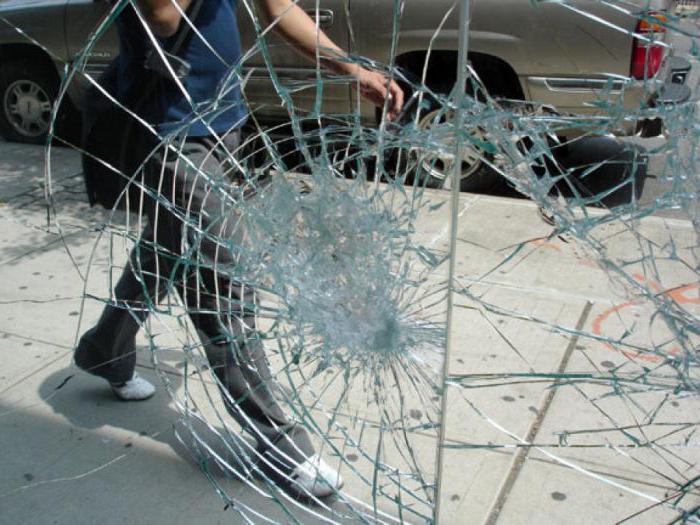
Usage in business processes
Any working principle can be adapted for business. The theory of broken windows did not escape this fate - Batyrev Maxim in his book “45 Manager Tattoos” devoted an entire chapter to this. In particular, it mentions the main subtext of the theory, according to which, if someone can violate the work schedule, then why can't others? Any violator provokes others to disregard the instructions of the leadership.
It can be said that in this case the well-known principle is paraphrased, according to which any example is contagious, not only bad. If some employees strictly follow the rules, the rest will also be forced to follow them. Of course, there will always be rebels or quiet pests. That is why not only the theory of broken windows is used - the book contains a fairly balanced set of measures that will help create a working atmosphere that is most conducive to effective solution tasks.

Psychological aspect
The devastation in the minds is not without reason considered one of the most serious problems of our time, because one pernicious idea is quite capable of infecting an entire society. Thus, it is not an exaggeration to say that the theory of broken windows in psychology has the same significance. School teachers are especially good at talking about this. If one of the students enthusiastically promotes some frankly flawed idea, and the teacher does not adequately respond to this, you can be sure that soon there will be more such students. Moreover, those who are not imbued with an erroneous idea will suffer from this. In a figurative sense of the word, all the windows will be broken.
Order on the table - order in thoughts
From a psychological point of view, it can be difficult to protect yourself from chain reaction according to which the broken windows theory works. We live in a difficult time, with a dynamic course of events, so it is very easy to miss some detail that will lead to a psychological breakdown. That is why it is so important not to neglect the little things that will cause great destruction.
Why does putting things in order help bring thoughts into a coherent system? This principle works in full accordance with the theory. Eliminating chaos around you, you do not let it into your thoughts. In addition, the systematization of the surrounding space has meditative properties, it perfectly helps to calm down.

domestic use
If you look closely, many housekeeping methods have a similar structure. No one suggests waiting for the final littering of the dwelling, so that later, with full awareness of the amount of work, they can get down to business. On the contrary, it is here that the meaning of the theory of broken windows is reflected. If you give rights to a small mess, it will soon spread to the whole house. Where one thing is lying around, you can throw the second, and where there are a lot of things, no one will notice another ten.
Without this, it is quite difficult to accustom children to normal housekeeping, because if parents consider it normal not to remove something right away, then why should children? No matter what adults say, a personal example in any case turns out to be the best educator.
Zero tolerance for violations of law and order
Why does this principle work? We have to admit that the part of offenders cannot be denied simple logic. Indeed, if someone does not pay attention to the rules, and nothing happens to him for this, then why should the rest of them strain? It is on this principle that the theory of broken windows is built. New York at one time really struck with rampant street crime, but as soon as minor offenses were taken up, other problems followed along the chain.
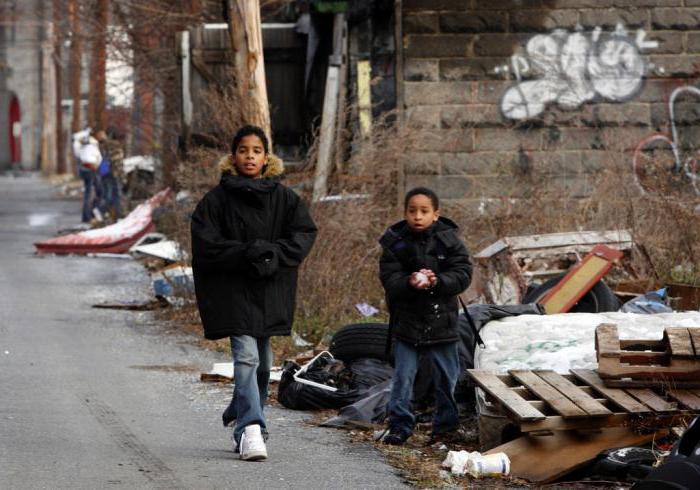
As a result, it was not only possible to make life safer, but the citizens themselves fully appreciated the practicality of laws and regulations. Perhaps it is a bit strange for our mentality, but it is in the USA that the norm is to report wrongdoing. Moreover, it is considered reprehensible to witness a "broken window" and not report it to the competent authorities. Thus, all citizens become to some extent police officers, demonstrating zero tolerance for violations of the law.
Chain of connivance and consequences
If at least one link in the chain is defective, the whole structure will inevitably collapse. This principle is perfectly illustrated by the theory of broken windows. Essays and articles on this topic regularly appear on the web in various interpretations, which once again confirms: it is worth giving up slack, showing connivance - and the consequences can not be surprised. Rather, on the contrary, by allowing minor shortcomings, we justify and prepare the ground in advance for the emergence of major problems.
A working example is the current traffic situation. It is no secret that all road users are equal in our country, but at the same time, “some are more equal than others”. There are categories of citizens who can violate the rules of the road, and they are unlikely to bear any responsibility for this. You can sort out the reasons for an infinitely long time, but if you are guided by the theory of broken windows, you just have to show toughness to everyone without exception, as the situation on the roads will become an order of magnitude safer and more adequate. However, as long as we see that someone can break the rules, it would be logical to assume that everyone can.
Related areas
Based on the theory of broken windows, you can develop your own working strategies in almost any field of activity. For example, writing a business plan relies heavily on preliminary studies. Demand, the competitive environment are being studied, potential customers are being developed, all the nuances that may affect the profitability of the future enterprise are necessarily taken into account. To do this, you first have to build extremely speculative moves, calculating the prospects, and among other tricks, the theory of broken windows can also help here. Batyrev's book, for example, will be useful for building a leadership strategy, but this is not enough.
If any large process is considered as a set of small tasks, then some of them will coincide with the theory almost to the details. This is also a good operating technique - to divide a large task into several small sub-items, each of which can be pre-processed using certain techniques, theories or practices.

How to use the theory?
It is known that any theory can be used "on the contrary". Let's say that the theory of broken windows is being considered, an article about which in this or that arrangement is found on many sites. But almost everywhere the schematic message remains: one broken window, which no one is going to reglaze, will cause all other windows to be broken.
Let's turn the theory over in meaning and take as a given a building in which not a single whole window is left. If you start to restore it, evenly and measuredly replacing all the glass with intact ones, then sooner or later all the windows will be intact, even if someone tries to break them again and again. Perhaps, it was precisely this direction that was guided at one time in New York, restoring order from chaos.
It cannot be said that sociological or forensic theories can be considered in the same way as theorems from school course geometry, but it's not mathematics. But in practical application, you can find some general concepts that allow you to predict the result and correct errors before they become obvious. Eliminate global problems, as well as changing windows throughout the building, is a troublesome and expensive task. It is better to immediately stop the seemingly insignificant encroachments of chaos.
In the late 70s of the XX century, the criminal situation in New York was terrible. Passers-by were robbed right on Broadway. Tourists were especially hard hit, from whom cameras and wallets were taken away without a twinge of conscience. The police strongly advised residents of the city to carry a $20 bill in the outer pocket of a jacket or coat in order to immediately give it to the gopstopniks. At that time, a few doses of heroin cost that much. Up to 2 thousand serious crimes and up to 10 murders were committed per day in the metropolis. At night, only a madman could go out into the street.
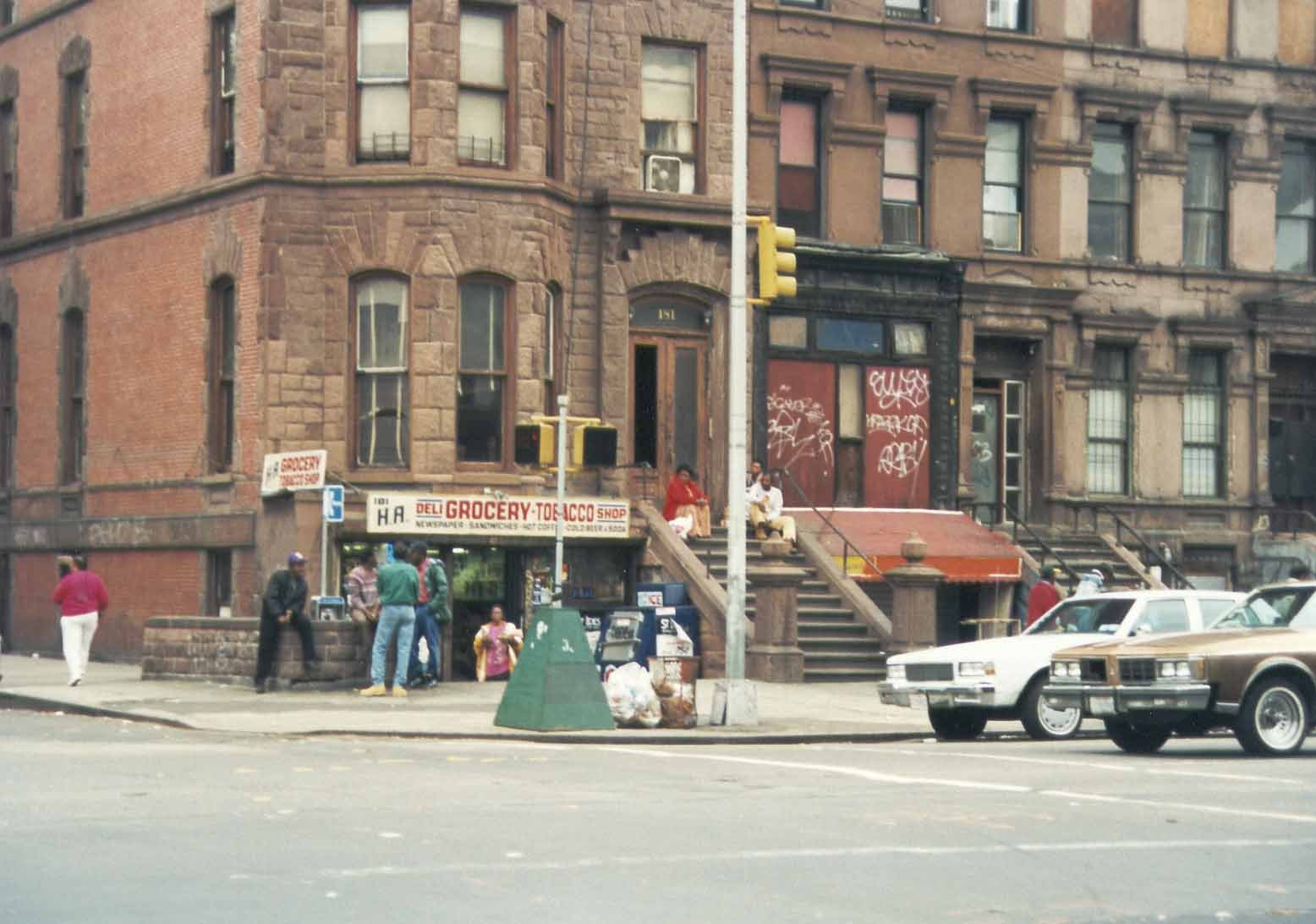
It was dangerous to ride the subway. Gangs of thugs broke into the cars and took away money and valuables from passengers. Moreover, all this happened in broad daylight with a massive crowd of people. The subway itself was an eerie sight. The platforms were littered with rubbish. Half of the lamps were not lit, and therefore the subway was in twilight. The walls were covered in graffiti and dipinti. Moreover, these were mostly vulgar drawings and inscriptions scratched or applied with paint.
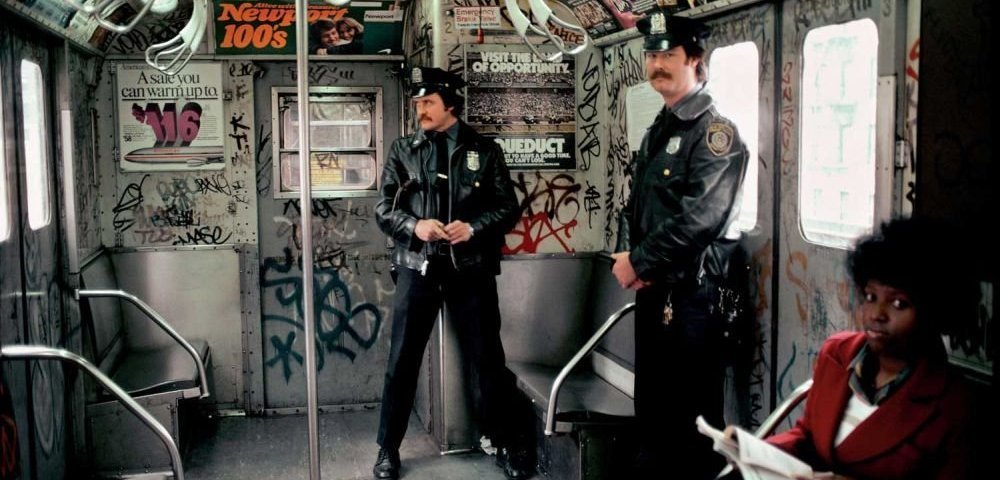
One of the eyewitnesses of that terrible nightmare recalled: “I entered the subway, stood in line for a token, and then went to the turnstile and found that the coin acceptor was broken. Two gloomy fellows stood nearby. They broke the turnstile and demanded that passengers give the tokens to them. Nobody "I didn't want to get involved with these criminals, and the tokens disappeared in the hands painted with tattoos. But most of the people simply bypassed the impudent couple and got into the subway for free. It all looked like hell. It seemed that the foundations of the state were collapsing"
![]()
And suddenly a real miracle happened. In 1985, crime peaked, and then suddenly began to decline sharply. Over the next 7 years, the number of murders decreased by 70%. The number of robberies, robberies, rapes fell by 50%. By 1995, New York had become one of the safest cities in the US. For some unknown reason, thousands of perverts and psychos suddenly stopped breaking the law. The streets and the metro became quiet and calm.
What caused this amazing transformation? Why did the same people start behaving differently? The answer is very simple. There was no miracle. Blame it on the Broken Windows Theory.

This saving panacea for all criminal troubles was invented and developed in 1982 by American political scientist James Quinn Wilson and sociologist George Kelling. Since then, numerous discussions have been held around the brainchild of these scientists. Experts have been arguing for more than 30 years, and in the meantime, "broken windows" have proven themselves in practice. They launched fundamental reforms in the criminal policy of many countries.

James Quinn Wilson

George Kelling
What is the essence of these very windows, and why are they broken? This is directly related to the assertion that crime and order are directly proportional. Imagine that there is a house. One window is broken. People walk by, look at the window, and they get the impression that there is complete anarchy in this house. Therefore, very soon someone will break other windows. But nothing will change. Only the house will already shine with empty window openings around the entire perimeter. All this will provoke a sense of impunity. It will spread like an infection throughout the street. And then it will cover the entire area, giving a signal for more serious and dangerous crimes.

This example indicates that people break the law not at all because they are poorly educated, and their heredity leaves much to be desired. Violation of the law is a direct consequence of the order that exists in the world around us. If there is a mess around, then it gives rise to a lot of criminals. That is, the atmosphere reigning around pushes people to illegal actions.
This statement of American sociologists decided to test in practice specialists from Denmark. They did some simple experiments. Let's consider one of them.

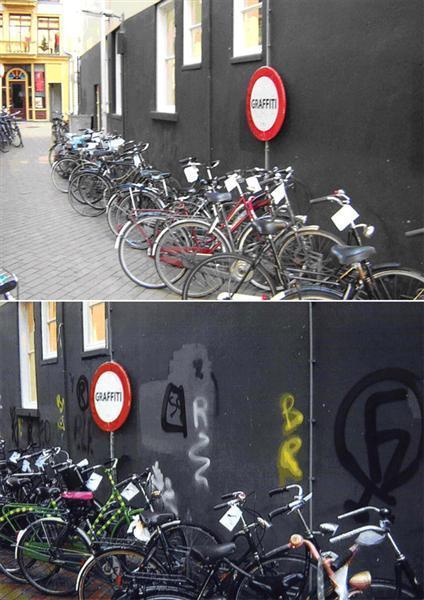

But let's go back to New York in the early 80s, when it was rocked by terrible crime. In 1985, David Gunn became director of the city's subway. He got the economy, which was the underworld in its softest version. And how did the new director start his work? He led a merciless fight against dipinti and graffiti. At first, this did not generate much enthusiasm among taxpayers. The metro had a lot of problems: technical condition, Fire safety and, of course, crime.
In the late 70s of the XX century, the criminal situation in New York was terrible. Passers-by were robbed right on Broadway. Tourists were especially hard hit, from whom cameras and wallets were taken away without a twinge of conscience. The police strongly advised residents of the city to carry a $20 bill in the outer pocket of a jacket or coat in order to immediately give it to the gopstopniks. At that time, a few doses of heroin cost that much. Up to 2 thousand serious crimes and up to 10 murders were committed per day in the metropolis. At night, only a madman could go out into the street.
It was dangerous to ride the subway. Gangs of thugs broke into the cars and took away money and valuables from passengers. Moreover, all this happened in broad daylight with a massive crowd of people. The subway itself was an eerie sight. The platforms were littered with rubbish. Half of the lamps were not lit, and therefore the subway was in twilight. The walls were covered in graffiti and dipinti. Moreover, these were mostly vulgar drawings and inscriptions scratched or applied with paint.
One of the eyewitnesses of that terrible nightmare recalled: “I entered the subway, stood in line for a token, and then went to the turnstile and found that the coin acceptor was broken. Two gloomy fellows stood nearby. They broke the turnstile and demanded that passengers give the tokens to them. Nobody "I didn't want to get involved with these criminals, and the tokens disappeared in their hands painted with tattoos. But most of the people simply bypassed the impudent couple and got into the subway for free. It all looked like hell. It seemed that the foundations of the state were collapsing."
And suddenly a real miracle happened. In 1985, crime peaked, and then suddenly began to decline sharply. Over the next 7 years, the number of murders decreased by 70%. The number of robberies, robberies, rapes fell by 50%. By 1995, New York had become one of the safest cities in the US. For some unknown reason, thousands of perverts and psychos suddenly stopped breaking the law. The streets and the metro became quiet and calm.
What caused this amazing transformation? Why did the same people start behaving differently? The answer is very simple. There was no miracle. It was the fault of everything.
This saving panacea for all criminal troubles was invented and developed in 1982 by American political scientist James Quinn Wilson and sociologist George Kelling. Since then, numerous discussions have been held around the brainchild of these scientists. Experts have been arguing for more than 30 years, and in the meantime, "broken windows" have proven themselves in practice. They launched fundamental reforms in the criminal policy of many countries.
What is the essence of these very windows, and why are they broken? This is directly related to the assertion that crime and order are directly proportional. Imagine that there is a house. One window is broken. People walk by, look at the window, and they get the impression that there is complete anarchy in this house. Therefore, very soon someone will break other windows. But nothing will change. Only the house will already shine with empty window openings around the entire perimeter. All this will provoke a sense of impunity. It will spread like an infection throughout the street. And then it will cover the entire area, giving a signal for more serious and dangerous crimes.
This example indicates that people break the law not at all because they are poorly educated, and their heredity leaves much to be desired. Violation of the law is a direct consequence of the order that exists in the world around us.. If there is a mess around, then it gives rise to a lot of criminals. That is, the atmosphere reigning around pushes people to illegal actions.
This statement of American sociologists decided to test in practice specialists from Denmark. They did some simple experiments. Let's consider one of them.
Near a large store along the wall was a parking lot for bicycles. The asphalt was perfectly clean, the wall was pleasing to the eye with whiteness. The experimenters removed all the trash cans and hung advertisements for a non-existent sporting goods store on the bikes. Sitting next to each other in the car, they began to observe the actions of the owners of the two-wheeled mechanisms.
The man walked up to the bike, removed the flyer from the handlebars, and looked around for the trash can. But there was nowhere to throw away the unnecessary leaflet. Everyone had 3 options: throw a bright piece of paper on the pavement, hang it on the handlebars of another bicycle, or put it in your pocket, then throw it into the nearest trash can. 33% of all cyclists threw ads on the ground.
After that, the experiment was repeated, but in a slightly different interpretation. Several cigarette butts and crumpled candy wrappers were thrown onto the asphalt, and abstract drawings were painted on the wall. This time around, 72% of cyclists threw unnecessary ads on the ground.
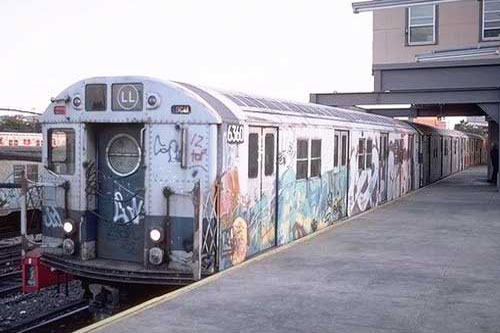
A subway car in New York City before the Broken Windows Theory was put into practice.
But let's go back to New York in the early 80s, when it was rocked by terrible crime. In 1985, David Gunn became director of the city's subway. He got the economy, which was the underworld in its softest version. And how did the new director start his work? He led a merciless fight against dipinti and graffiti. At first, this did not generate much enthusiasm among taxpayers. The metro had a lot of problems: technical condition, fire safety and, of course, crime.
They began to hint to the director that he was not doing what he was supposed to do. But he replied: "The drawings on the walls and in the trains symbolize the collapse of the system. First of all, we must defeat graffiti, and only after that start operating trains worth tens of millions of dollars. If we cannot protect them from vandalism, then they will immediately disfigure."
David Gunn ordered the wagons to be put in order. Every wagon and every day. At the end of the routes, special points were established. As soon as a car painted with drawings and scratched came there, everything was immediately washed off, and the scratches were painted over. Seats cut with knives and broken lamps changed. Large teams of people worked at the points for days on end. But the trains were getting cleaner and better day by day. Not much time passed, and cases of vandalism could already be counted on the fingers. They have become extremely rare.

New York subway today
In 1986, William Bratton took over as New York City Transportation Police Chief. But instead of increasing the percentage of homicides and serious crimes solved, he ordered to deal with stowaways in the subway.
To journalists' questions, he replied that the more "hares", the less order. And this creates the prerequisites for more serious violations of the law. At that time, 200,000 free riders rode the subway every day. Young guys jumped over the turnstiles and ran to the trains. Others looked at the case and also stopped paying. And indeed, if someone does not pay, then why should I pay. The number of "hares" increased every day, and the problem began to get out of control.
And what did the chief of police do? He placed plainclothes police near the turnstiles. They began to grab the "hares", put handcuffs on them and line them up on the platform. Then they were put into buses and taken to the police stations. There they fingerprinted, checked against the database, and searched. Thus caught a lot of dangerous criminals who are wanted. But the most important thing was that the bad guys got wiser very quickly. They stopped carrying weapons with them and began to pay for travel.
In 1993, the city's residents elected a new mayor. It was Rudolph Giuliani. The broken windows theory attracted him for its simplicity and effectiveness. He appointed Bratton chief of all New York police. And he began to mercilessly eradicate petty offenses throughout the metropolis.
Those who behaved obscenely in public places began to be seized on the streets: they rioted and cursed, threw cigarette butts on the ground, broke empty bottles, painted on the walls, and begged passers-by for money. If a person urinated on the street, then he was immediately put in jail.
The result was not long in coming. The city began a sharp decline in crime. By eradicating minor offenses, the police, thereby, dealt a merciless blow to serious offenses, murders and robberies. The connection between cause and effect was severed. And the result of this was that New York in the XXI century has become the safest and most prosperous city in the United States.
Most people believe that there are no miracles in the world. In general, we can agree with this. But in any rule there is an exception that only confirms the rule. In this case, one of the exceptions was largest cities America. There were people in it who took the Broken Windows Theory seriously. They put it into practice, and the result is visible to the naked eye. But the most remarkable thing is that this theory can be applied in all areas of life. And she will work. So, as they say, you and the cards are in your hands..






